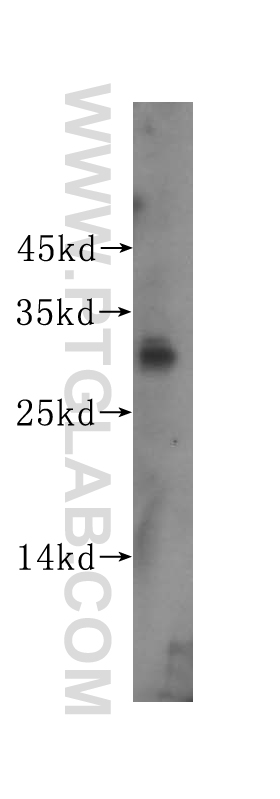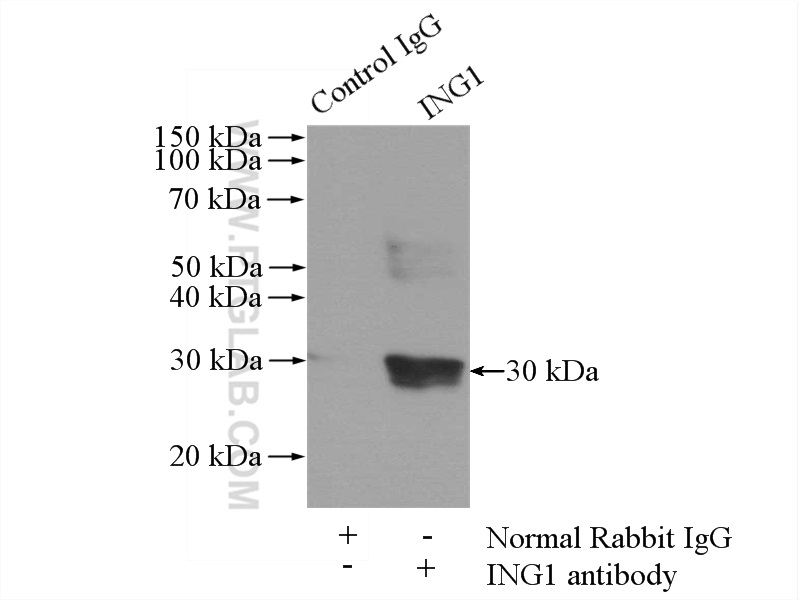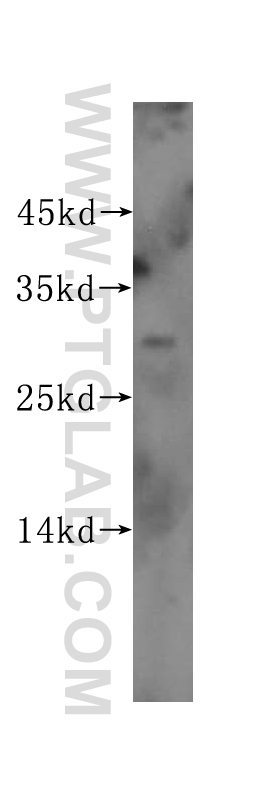验证数据展示
经过测试的应用
| Positive WB detected in | human heart tissue |
| Positive IP detected in | mouse heart tissue |
推荐稀释比
| 应用 | 推荐稀释比 |
|---|---|
| Western Blot (WB) | WB : 1:500-1:1000 |
| Immunoprecipitation (IP) | IP : 0.5-4.0 ug for 1.0-3.0 mg of total protein lysate |
| It is recommended that this reagent should be titrated in each testing system to obtain optimal results. | |
| Sample-dependent, Check data in validation data gallery. | |
产品信息
16185-1-AP targets ING1-specific in WB, IP, ELISA applications and shows reactivity with human, mouse samples.
| 经测试应用 | WB, IP, ELISA Application Description |
| 经测试反应性 | human, mouse |
| 文献引用反应性 | rat' |
| 免疫原 | Peptide 种属同源性预测 |
| 宿主/亚型 | Rabbit / IgG |
| 抗体类别 | Polyclonal |
| 产品类型 | Antibody |
| 全称 | inhibitor of growth family, member 1 |
| 别名 | ING1, p24ING1c, p33, p33ING1, p33ING1b, p47, p47ING1a |
| 计算分子量 | 47 kDa |
| 观测分子量 | 30 kDa |
| GenBank蛋白编号 | NM_198218 |
| 基因名称 | ING1 |
| Gene ID (NCBI) | 3621 |
| RRID | AB_2233908 |
| 偶联类型 | Unconjugated |
| 形式 | Liquid |
| 纯化方式 | Antigen affinity purification |
| UNIPROT ID | Q9UK53 |
| 储存缓冲液 | PBS with 0.02% sodium azide and 50% glycerol , pH 7.3 |
| 储存条件 | Store at -20°C. Stable for one year after shipment. Aliquoting is unnecessary for -20oC storage. |
背景介绍
Members of inhibitor of growth (ING) family function in inhibiting cell growth and inducing apoptosis. They are sequence homologous proteins. ING1 is the first identified one, interacting with TP53 and is a component of the p53 signaling pathway. Multiple alternatively spliced transcript variants encoding distinct isoforms of ING1 have been reported. This antibody recognizes all 24/33/47kd isoforms of ING1, but will not bind ING2, 3 or 4.
实验方案
| Product Specific Protocols | |
|---|---|
| WB protocol for ING1-specific antibody 16185-1-AP | Download protocol |
| IP protocol for ING1-specific antibody 16185-1-AP | Download protocol |
| Standard Protocols | |
|---|---|
| Click here to view our Standard Protocols |


